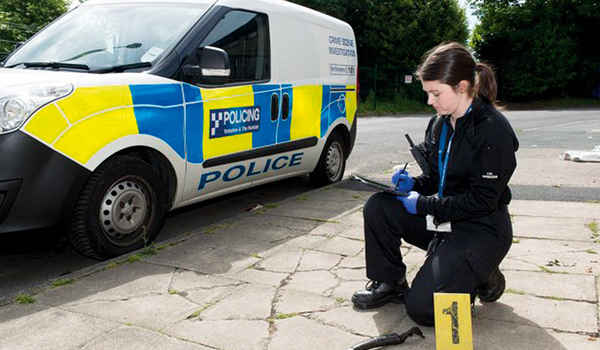Better police surveillance technologies come at a cost
The ever-increasing adoption of digital surveillance technologies by police departments may dramatically improve the efficiency of criminal investigations, but it also creates the opportunity for abuse and misuse, warns a US expert in criminal law and information privacy.

The ever-increasing adoption of digital surveillance technologies by police departments may dramatically improve the efficiency of criminal investigations, but it also creates the opportunity for abuse and misuse, warns a US expert in criminal law and information privacy.
As in the UK, the widespread use of advanced surveillance technologies such as automatic numberplate recognition (ANPR), surveillance cameras, red light cameras and facial recognition software by US police departments, combined with a lack of oversight and regulation, have the potential to develop into a form of widespread community surveillance, which ought to pose significant privacy concerns to law-abiding citizens, said Stephen Rushin, a professor of law at the University of Illinois.
What worries me is that the technologies could be harnessed to monitor not just one person, but an entire community, he said. For example, if police departments use ANPR in concert with an extensive network of surveillance cameras, that means that they really do have the ability to monitor everyone all of the time. Legally speaking, thats troubling.
In 1997, about 20 per cent of police departments in the US used some type of technological surveillance. By 2007, that number had risen to more than 70 per cent of departments, according to Professor Rushin.
This radical shift in policing is the beginning of what I call the digitally-efficient investigative state, where technological replacements for traditional investigations are used to dramatically improve the efficiency of surveillance, added Professor Rushin.
While technologies that give the state an extrasensory ability may violate an individuals reasonable expectation of privacy, technologies that merely improve the efficiency of otherwise permissible investigation techniques are presumptively permissible, explained Professor Rushin.
Much of the US Supreme Courts previous treatment of police surveillance has rested on the belief that individuals have no expectation of privacy in public places and that surveillance technologies that merely
improve the efficiency of police investigations comport with the Fourth Amendment, he said. While officers must obtain a warrant before using some technologies, the courts generally do not regulate efficiency-enhancing technologies.
Those assumptions have been workable in the past because of the limited use and capability of efficiency-enhancing technologies. But with the advent of ANPR and surveillance cameras with biometric recognition, the efficiency of the surveillance itself is becoming a constitutional issue, explained Professor Rushin.
Since no one has a reasonable expectation of privacy when theyre in public, that means that a police officer can do whatever a normal person can do without any kind of special approval, he said. They can observe your numberplate and write it down on a piece of paper and run it through a database. But now they could also use an automatic reader to scan numberplates in bulk up to 1,800 numberplates per minute, in fact. That will invariably vacuum up enormous amounts of data on innocent people too. So you have technology that might replace the efforts of dozens, even hundreds, of individual law enforcement officers.
Echoing the concerns of the UKs Information Commissioners Office, Professor Rushin said the rate at which police departments were adopting and utilising these technologies was not matching the rate at which they were adopting retention policies to regulate the new devices.
In his paper, The Legislative Response to Mass Police Surveillance, Professor Rushin says legislative bodies must rein in the unregulated efficiency of emerging investigative and surveillance technologies, establishing basic conditions on who can access the data.
It would also give a police department discretion to craft unique data policies tailored to its communitys specific needs while also encouraging some level of statewide consistency, he adds.


